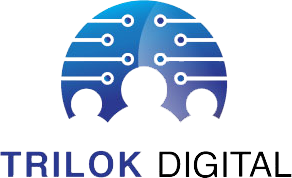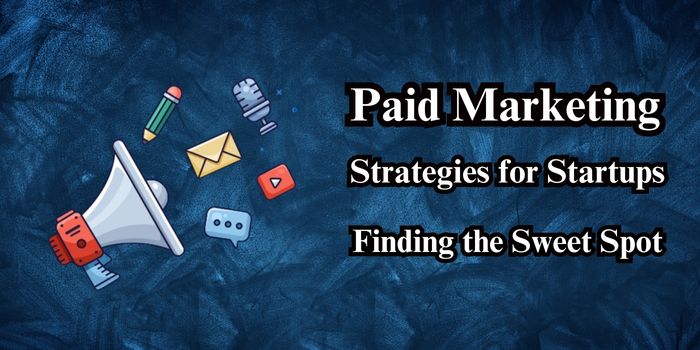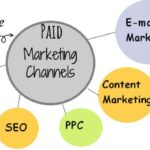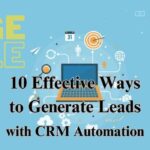In today’s competitive landscape, paid marketing strategies have emerged as powerful tools to gain visibility, attract customers, and boost revenue.
However, for startups with limited budgets, finding the right balance and identifying the sweet spot in paid marketing can make all the difference between success and burnout.
In this blog, we’ll explore essential insights and tactics to help startups navigate the world of paid marketing and discover the optimal approach that aligns with their unique needs and goals. Let’s dive in!
Paid marketing strategies can be highly effective for startups to gain visibility, attract customers, and grow their businesses.
However, finding the right balance or “sweet spot” between investment and returns is crucial to ensure the success of these strategies.
Here are some paid marketing strategies that can help startups find the sweet spot:
Set Clear Goals
Begin by defining clear and measurable marketing goals. Determine what you want to achieve with your paid marketing campaigns, such as increasing website traffic, generating leads, or boosting sales. Having clear objectives will guide your decision-making and help you measure success.
Get to Know Your Audience
Understand who your audience is, what they like, and what problems they face. This knowledge will enable you to create more relevant and effective ads that resonate with potential customers.
Start Small, Test, and Optimize
Begin with a modest budget to test different paid marketing channels and strategies. This approach allows you to evaluate which channels deliver the best results for your business. Monitor the performance of your ads and optimize them based on data and insights.
Use A/B Testing
A/B testing involves creating multiple versions of an ad with slight variations to see which one performs better. Test different ad copy, images, headlines, or calls-to-action to identify what resonates most with your audience.
Focus on High-Quality Content
Whether it’s search engine marketing (SEM) or social media ads, high-quality content is essential. Ensure your ad copy and visuals are compelling, concise, and aligned with your brand message.
Leverage Social Media Advertising
Social media platforms offer targeted advertising options that allow you to reach specific audience segments. Utilize platforms like Facebook, Instagram, Twitter, LinkedIn, and others to promote your startup.
Explore Influencer Marketing
Collaborate with influencers relevant to your niche to reach a wider audience. Influencers can help showcase your product or service to their followers and add credibility to your brand.
Consider Display Advertising
Display ads, such as banner ads or native ads, can be effective in increasing brand awareness and driving traffic to your website. Google Display Network and other ad networks can help you reach a broader audience.
Retargeting and Remarketing
Implement retargeting or remarketing campaigns to reach users who have previously visited your website but did not convert. This can help increase conversion rates by keeping your brand top-of-mind.
Monitor ROI and Key Metrics
Keep a close eye on the return on investment (ROI) of your paid marketing campaigns. Track key performance indicators (KPIs) such as cost per click (CPC), cost per acquisition (CPA), click-through rate (CTR), and conversion rate.
Budget Allocation
Allocate your budget based on the channels that are delivering the best results. Shift more resources towards the most successful campaigns while scaling back on underperforming ones.
Stay Agile
The digital marketing landscape is constantly evolving, so be willing to adapt and try new approaches as trends and technologies change.
By combining these strategies and regularly analyzing the performance of your campaigns, you can find the sweet spot that maximizes the impact of your paid marketing efforts while staying within your budget constraints.
What is Paid Media
Paid media refers to a marketing strategy where businesses or individuals pay to promote their content, products, or services on various platforms and channels. Unlike earned or owned media, which rely on organic visibility and content creation, paid media involves investing money to reach a specific audience.
Common examples of paid media include pay-per-click (PPC) advertising, social media ads, display ads, sponsored content, and influencer marketing.
By leveraging paid media, businesses can increase brand visibility, attract potential customers, and drive traffic to their websites, ultimately aiming to achieve their marketing objectives and maximize return on investment (ROI).
What are the Benefits of Paid Traffic?
Paid search, also known as search engine marketing (SEM), offers numerous benefits for businesses seeking to enhance their online visibility and attract potential customers. Firstly, it provides immediate visibility on search engine results pages, ensuring your ads are seen by users searching for relevant keywords.
The ability to target specific demographics, locations, and devices enables precise audience targeting, maximizing the chances of reaching the right customers.
Additionally, paid search offers measurable results, allowing businesses to track key metrics such as click-through rates, conversions, and return on investment (ROI).
With the flexibility to adjust campaigns in real-time and set budget limits, paid search provides cost-effective advertising, ensuring you pay only for actual clicks or actions.
These advantages make paid search an indispensable tool for driving website traffic, generating leads, and achieving overall business growth.
What Types of Paid Ads are there?
Here’s a more comprehensive overview of various types of paid advertising:
Search Engine Marketing (SEM)
This involves bidding on keywords to display ads prominently in search engine results. It includes two main types: Pay-Per-Click (PPC) ads, where advertisers pay when users click on their ads, and Cost-Per-Thousand Impressions (CPM) ads, where advertisers pay for every 1,000 ad views.
Social Media Advertising
This form of paid advertising occurs on social media platforms like Facebook, Instagram, Twitter, LinkedIn, and others. Advertisers can target specific demographics, interests, and behaviors, making it highly effective for reaching niche audiences.
Display Advertising
Display ads appear as banners, images, or interactive media on websites, mobile apps, and other online platforms. They can be highly visual and help increase brand visibility and awareness.
Video Advertising
Video ads are displayed on various online video platforms like YouTube, social media, and websites. They can be in-stream (pre-roll, mid-roll, or post-roll) or out-stream (within content but not part of the video).
Native Advertising
Native ads blend seamlessly with the content of the platform where they appear, matching the design and style of the site. They are less intrusive and offer a more organic user experience.
Influencer Marketing
In this type of advertising, brands collaborate with influencers, popular individuals, or celebrities with a significant following to promote their products or services to a broader audience.
Remarketing/Retargeting
This strategy targets users who have previously visited a website or interacted with a brand but didn’t convert. Advertisements are shown to these users to re-engage and encourage them to complete the desired action.
Affiliate Marketing
In this model, businesses pay affiliates (publishers or influencers) a commission for driving traffic or sales through their promotional efforts.
Sponsored Content
Brands pay to have their content featured on websites or media outlets. The content is usually designed to provide value to the audience while subtly promoting the brand.
Programmatic Advertising
Programmatic ads are purchased and displayed through automated systems, using real-time data and AI to target specific audiences with precision.
Mobile Advertising
Ads designed specifically for mobile devices, including mobile banner ads, interstitial ads, and in-app ads, as mobile usage continues to grow.
Audio Advertising
Ads delivered through audio channels, such as streaming music services and podcasts.
Choosing the right type of paid advertising depends on the business’s objectives, target audience, budget, and overall marketing strategy.
What is an Example of Earned Digital Media?
Earned media refers to publicity and exposure gained through organic means, where third-party sources, such as journalists, bloggers, or customers, voluntarily promote a brand or its offerings.
It is the result of positive word-of-mouth, favorable media coverage, or social media mentions.
One example of earned media is when a satisfied customer shares their experience on social media, generating positive reviews and recommendations that can attract new customers.
Another example is when a reputable publication writes a favorable article about a startup, increasing its credibility and visibility in the market.
Earned media is valuable as it comes across as more authentic and trustworthy than traditional advertising, making it an essential aspect of successful marketing strategies for startups and established businesses alike.
What is the Difference between Organic and Paid Search Clicks
Organic search and paid search are two distinct approaches to driving traffic to a website through search engine results. Organic search refers to the natural, unpaid listings that appear when users search for relevant keywords.
These rankings are influenced by various factors, such as website content, relevance, and search engine optimization (SEO) efforts. In contrast, paid search involves bidding on specific keywords to display advertisements prominently within search engine results.
Advertisers pay a fee each time a user clicks on their ad (Pay-Per-Click or PPC). While organic search provides long-term, sustainable visibility and credibility, paid search offers immediate visibility and control over ad placement.
Both strategies have their merits, and a well-balanced digital marketing approach often incorporates elements of both to maximize online presence and reach the target audience effectively.
What should be the Marketing Strategy of a Startup?
Startup marketing strategies are essential for new businesses to gain traction and attract their target audience. Startups often face limited resources and fierce competition, making it crucial to employ creative and cost-effective approaches.
Content marketing, social media marketing, and search engine optimization (SEO) are commonly used strategies to build brand awareness and engage potential customers.
Additionally, influencer marketing and partnerships with complementary businesses can help startups reach a broader audience. Startups should focus on understanding their unique value proposition and tailoring their marketing efforts to resonate with their target market.
By continuously analyzing results and refining their tactics, startups can optimize their marketing strategies for sustainable growth and success.
Paid marketing can be a powerful tool for driving growth and reaching your business goals.
Thank you for joining us on this journey to uncover the secrets of successful paid marketing strategies for startups. Wishing you all the best in your marketing endeavors!




